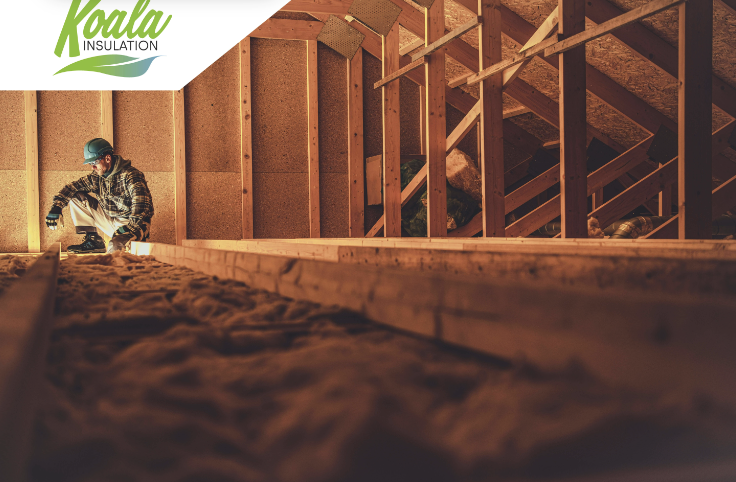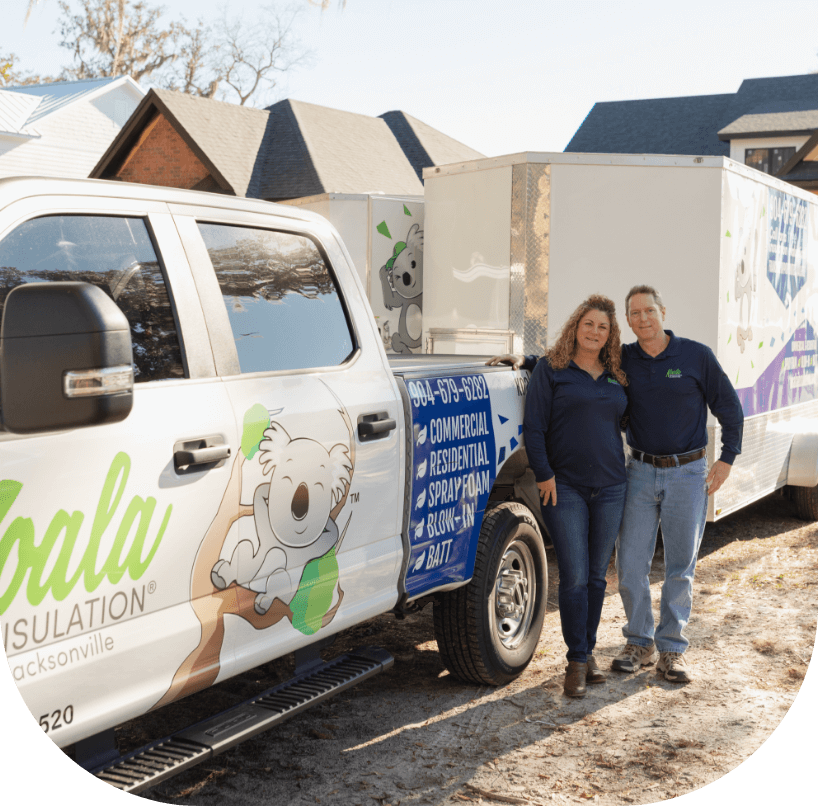
Is My Home Well Insulated? Key Signs and Expert Tips for Energy Efficiency from Koala Insulation
- July 2, 2024
Whether your house is brand-new or has been well-lived-in for years, there's a good chance that your insulation may need an update. Studies have shown that over 90% of homes in the United States are under-insulated. A well-insulated home offers numerous benefits, from improved comfort to energy savings. But why are so many homes under-insulated?
Why Homes Are Often Under-Insulated
One primary reason is that builders typically only install enough insulation to meet the minimum code requirements in your local jurisdiction. From a builder's perspective, there's no incentive to add more insulation than necessary, as it increases construction costs. Therefore, even if your home is new, it may still be under-insulated. The North American Insulation Manufacturers Association (NAIMA) highlights that many homes lack adequate insulation, primarily due to cost-saving measures during construction .
Another reason is that insulation settles and degrades over time. If you've been living in your home for many years, the effectiveness of your insulation may have diminished since you first moved in. Factors like moisture, pests, and general wear and tear can reduce the insulating properties of your home's materials. The U.S. Department of Energy (DOE) notes that older homes are particularly at risk of having outdated or insufficient insulation, leading to increased energy costs and reduced comfort .
Signs Your Home May Be Under-Insulated
So, how can you tell if your house is well-insulated? While hiring a professional insulation expert for a thorough evaluation is the best approach, there are several warning signs you can look out for:
Symptom #1: Very Cold or Very Warm Walls
This is an easy test to perform on your own. Ideally, try this in the winter when the difference between indoor and outdoor temperatures is more pronounced. Place your hand on an exterior-facing wall. If it's significantly colder than the interior temperature of the room, your insulation may not be adequately trapping heat inside your home and allowing it to seep out through the walls. The same principle applies in summer; walls should not feel excessively warm if your insulation is effective.
Symptom #2: Indoor Temperature Fluctuations
Pay attention to the temperature in different rooms of your home. If you notice significant temperature fluctuations between rooms with all windows and doors closed, you may have insufficient insulation. Consistent indoor temperatures are a hallmark of good insulation. According to Energy Star, a well-insulated home maintains a uniform temperature throughout, preventing hot or cold spots from developing .
Symptom #3: Higher Energy Bills
If your energy bills are steadily increasing without any significant changes in your home's energy usage, your insulation may be to blame. As insulation degrades over time, it becomes less effective, forcing your heating and cooling system to work harder to maintain your desired temperature, thus driving up your energy bills. The DOE states that improving insulation can reduce heating and cooling costs by an average of 15% , which could lead to significant savings over time.
Symptom #4: Pests
If you notice uninvited tenants like mice or roaches, it may indicate that your insulation and walls need inspection. Pests can damage insulation, and homes with inadequate insulation are more susceptible to pest invasions. The Insulation Institute notes that pests can create gaps and holes in insulation, leading to drafts and reducing its effectiveness .
Symptom #5: Moisture
Wet spots on walls or ceilings should be addressed immediately. Not only are they often a sign of improper insulation, but they can also cause severe damage if not addressed quickly. If you notice moisture collecting in your home, it's time to call an insulation expert. Moisture can lead to mold and mildew, which can cause health issues and structural damage.
Symptom #6: Mold or Mildew
Improper insulation can lead to moisture buildup, resulting in mold and mildew in your attic, ceilings, or walls. If you start to smell or see mold, improper insulation may be the culprit. According to the Cellulose Insulation Manufacturers Association, cellulose insulation is treated to resist mold growth, making it a good option for homes in humid climates .
Symptom #7: Noticeable Drafts
If you feel a chill in the air but no windows or doors are open, it’s a good sign that your home isn't properly sealed and insulated. Locate any drafty areas in your home so you can point them out to an insulation expert who can help you address the problem. Drafts can indicate gaps in insulation or poor sealing around doors and windows.
Additional Indicators of Poor Insulation
Beyond the common symptoms mentioned, there are other subtle indicators that your insulation might need an update:
Noise Pollution
Insulation also acts as a sound barrier. If you notice that outside noises seem louder than usual, it might be due to insufficient insulation. A well-insulated home should provide a quieter indoor environment by reducing noise infiltration from outside.
Roof and Attic Issues
In the winter, check your roof after a snowfall. If snow melts quickly off your roof while your neighbors' roofs remain snow-covered, it might be a sign that heat is escaping through your attic due to poor insulation. Proper attic insulation helps maintain a consistent roof temperature, preventing ice dams and reducing heat loss.
Age of the Home
The age of your home can also be a factor. Homes built before the 1980s often have less insulation than modern homes. If your home is older, it might be worthwhile to have an insulation expert evaluate your insulation levels.
What to Do if You Suspect Your Home Needs an Insulation Update
If you suspect your home needs an insulation update, the best course of action is to call an insulation expert who can thoroughly evaluate your home's insulation needs. Updating your insulation not only makes your home more comfortable and temperate but also provides long-term energy savings. A well-insulated home allows your heating and cooling systems to work more efficiently, saving you money on energy bills for years to come.
At Koala Insulation, our experts specialize in all types of attic insulation and ventilation. They arrive with state-of-the-art equipment to inspect your attic or home thoroughly and identify any areas needing repair or improvement. They provide a detailed assessment of your space's current conditions and use their years of experience to design solutions that fit your home and budget.
By hiring a Koala Insulation expert, you not only enjoy a more efficient home faster but also benefit from the years of energy savings that professionally installed insulation provides.

Recent Posts
-
Water Damage and Insulation: Expert Solutions to Protect Your Home and Prevent Future Issues
Read Article -
Unlock Savings with the Inflation Reduction Act: How Insulation & Solar Attic Fans Could Boost Your Home’s Efficiency
Read Article -
Remember Last Winter’s Chill? Act Now to Stay Warm This Year!
Read Article -
The Hidden Costs of Poor Insulation: How to Save Money Year-Round
Read Article -
Is My Home Well Insulated? Key Signs and Expert Tips for Energy Efficiency from Koala Insulation
Read Article

Be Your Own Boss.
Secure Your Future.
Make A Difference.
Becoming a Koala Insulation franchise owner offers life-changing benefits. A low initial investment and extensive training makes it easy to start your own franchise and find success. Get started today!
Schedule A Call
Why a Koala Insulation Franchise Simply Makes Sense
Ready to take the leap into franchising?
-
Be in control of your financial future and have ample opportunity to increase your net worth.
-
Joining an already successful brand means a lower failure rate.
-
Own an asset that pays dividends and can be sold for more in the future.
-
Get a proven business model and strategies instead of learning on your own.
-
Have complete control over your career, hours, and investment.
-
Be the first to tap into untapped territories you can later expand on.
-
Your reputation and brand name recognition are already established.
-
Senior leadership in the Koala franchise system has over 40 years of franchising experience.